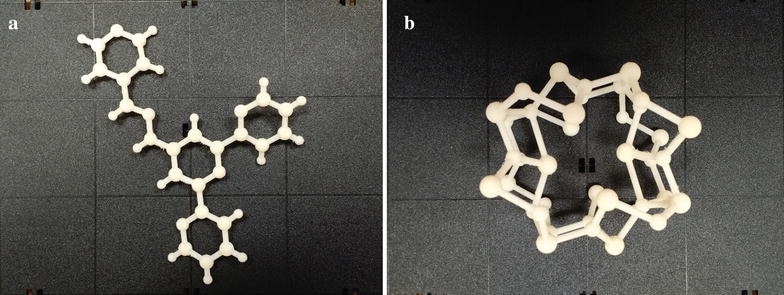Nov 30 2016
When I was in elementary school, I loved the science experiments I was assigned in class. One of my favorites was growing crystals. It was magical – all I had to do was mix a salt solution together with water, and within hours crystals would be sprouting from the glass, eventually growing into long, needle-like structures. None of the ones I made ever lasted; they tended to break apart as soon as I removed them from the water, but they were still beautiful and fascinating, and I learned information about the different types of crystal structures that I still retain to this day.
 Credit: 3dprint.com
Credit: 3dprint.com
I’ve recently seen those same needly crystals growing in glasses of water at the homes of friends with children, so I know that my favorite experiment is still a staple in elementary school science classes. However, even the classic crystal has gotten more high-tech. 3D printed crystals have proven a useful tool in teaching chemistry students about crystal structures, but they’re not exactly easy to print. Converting complex crystal structures into 3D printable files is a tedious and time-consuming job, but a team of researchers has come up with a way to make it easier and faster.
It isn’t hard to find crystal structures for study online. The Crystallography Open Database (COD) contains hundreds of thousands of crystal structures that can be easily obtained in a file format known as crystallographic information file (CIF), a standard text file accessing and viewing crystallographic information. Converting CIFs into 3D printable files, however, is a headache, so a research team composed of experts from several institutions, including the University of Alabama and the Royal Society of Chemistry, took more than 30,000 COD files, converted them into 3D printable format, and made them available to the public.
“We used a Jmol script to programmatically convert over 30,000 crystal structures into 3D printable files,” the team states. “The 3D printable file datasets and programmatic scripts are provided openly to the community on figshare. A Jmol 3D Print website was created based on the COD search interface that allows users to discover the 3D printable crystal structure file dataset via text, SMILES, reference, elements, and cell parameters. In addition, users can create a custom 3D printable file (STL or VRML) from their own CIFs and for any structure in the COD using the JSmol implementation within the 3D Print website.”
In a paper entitled “Programmatic conversion of crystal structures into 3D printable files using Jmol,” the researchers document the three-year process of painstakingly converting the files, which can be accessed, ready to print in STL or WRL format, here. Over 30,000 files are available, but if you’re looking to print one of the other several hundred thousand structures not converted by the research team, you can easily create your own printable file using this helpful resource.
“Three-dimensional (3D) printed crystal structures offer several advantages over traditional molecular model constructs (e.g. plastic molecular model kits, Styrofoam balls, beads),” the researchers add. “Perhaps the greatest advantage is that 3D printing is capable of fabricating extremely complex molecular structures that would be difficult or impossible to create with traditional molecular model fabrication techniques.”
They may not be as simple to create as tossing some salt in water and watching them grow, but 3D printed crystals can present a level of magnified detail that often can’t be seen in their naturally occurring counterparts. Authors of the study, which you can read here, include Vincent F. Scalfani, Jahred M. Little and Jason E. Barra of the University of Alabama; Valery Tkachenko, Karen Karapetyan, Alexey Pshenichnov of the Royal Society of Chemistry; Antony J. Williams of the Environmental Protection Agency’s National Center of Computational Toxicology and author of the ChemConnector blog; and Robert M. Hanson of St. Olaf College.